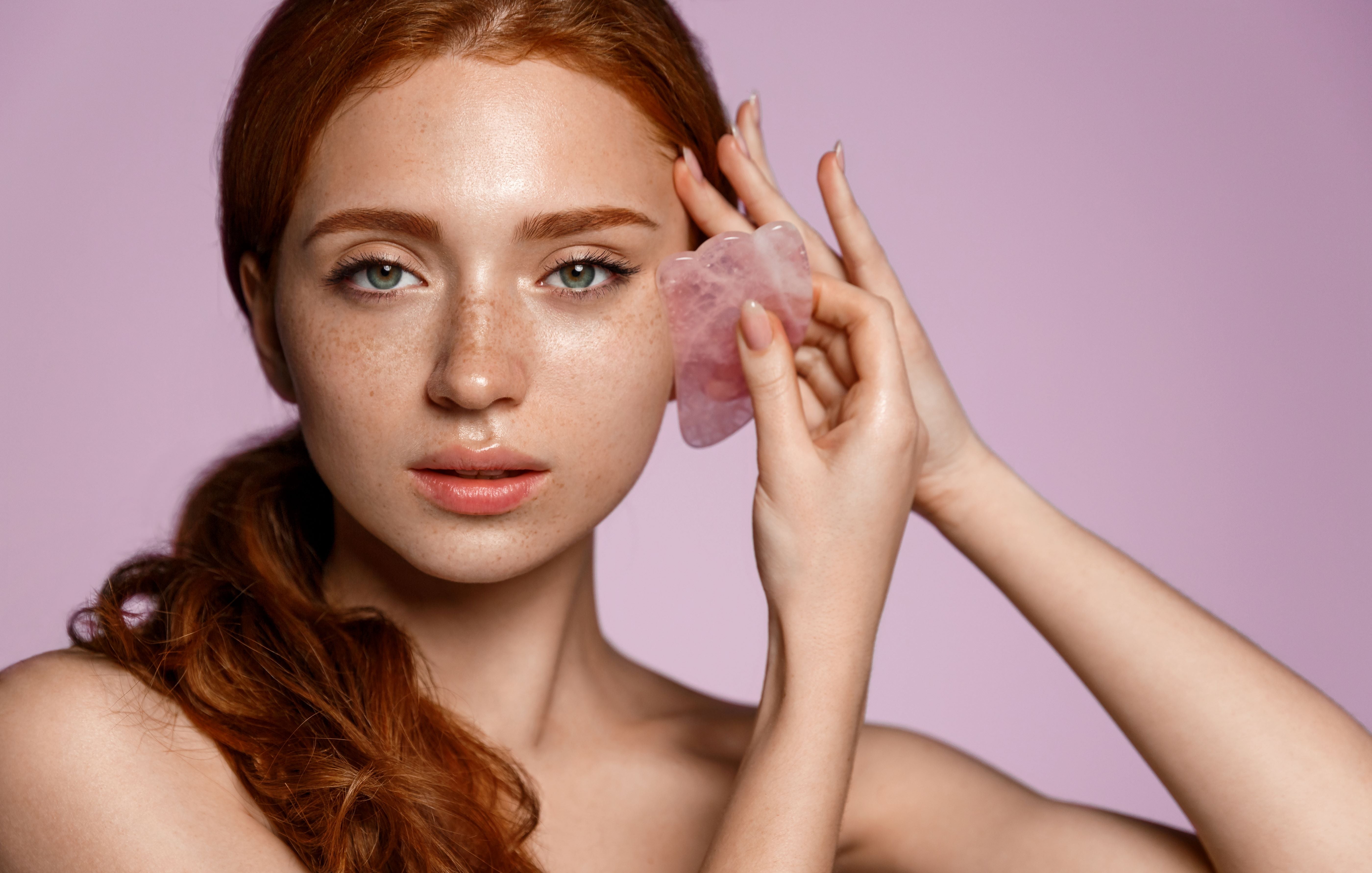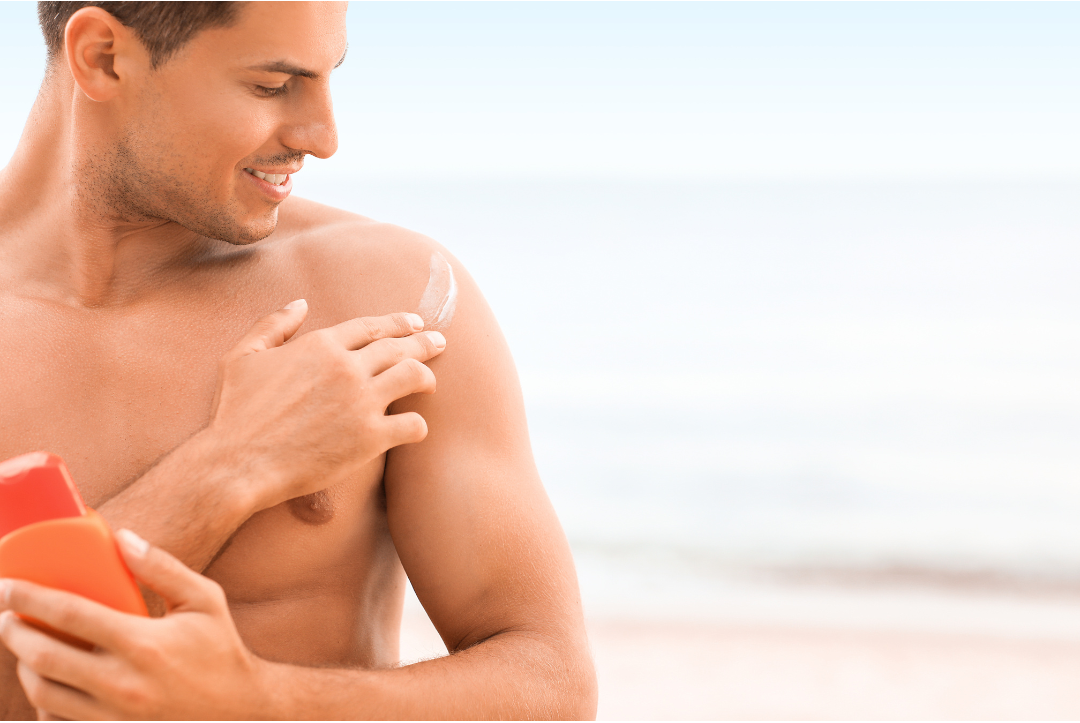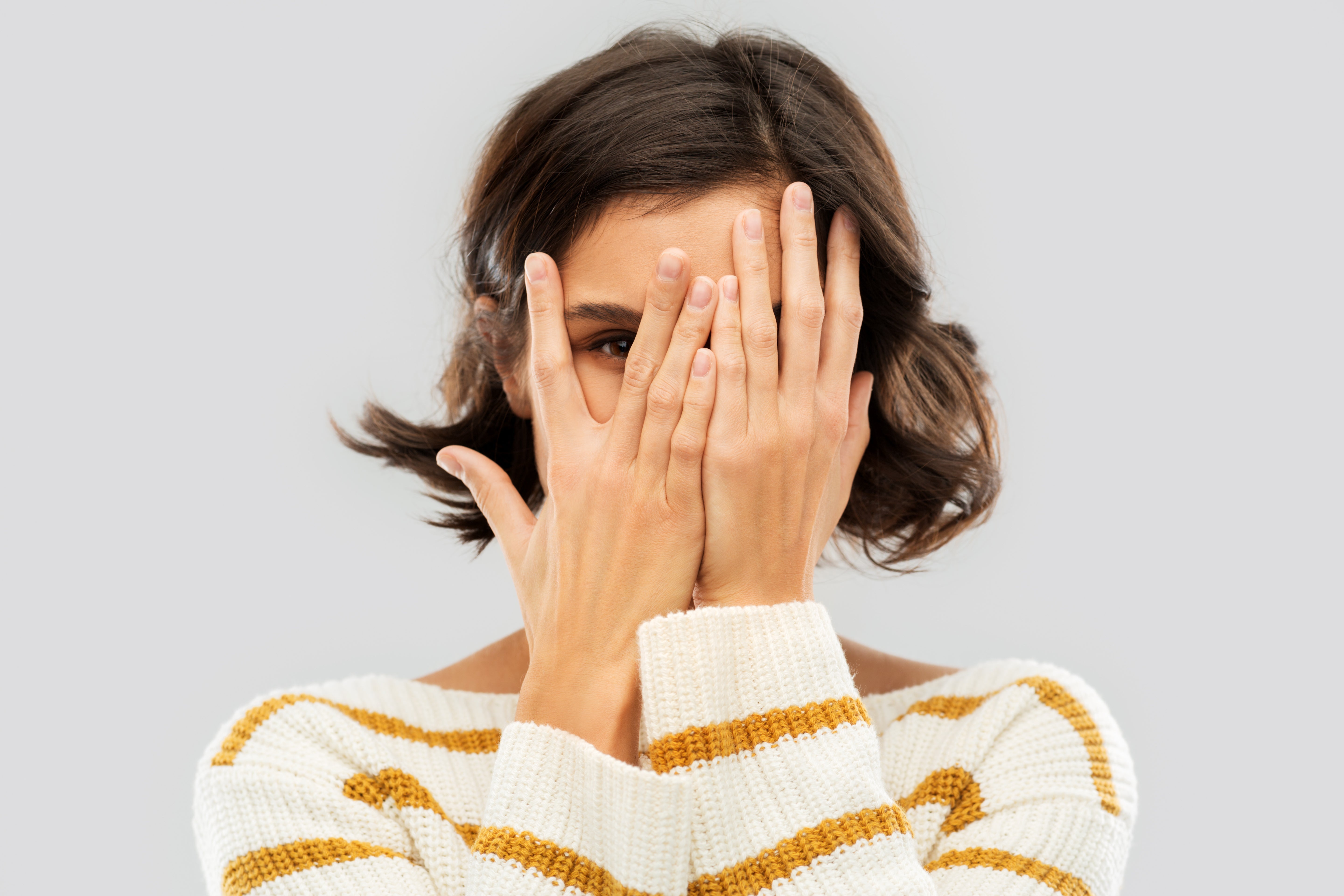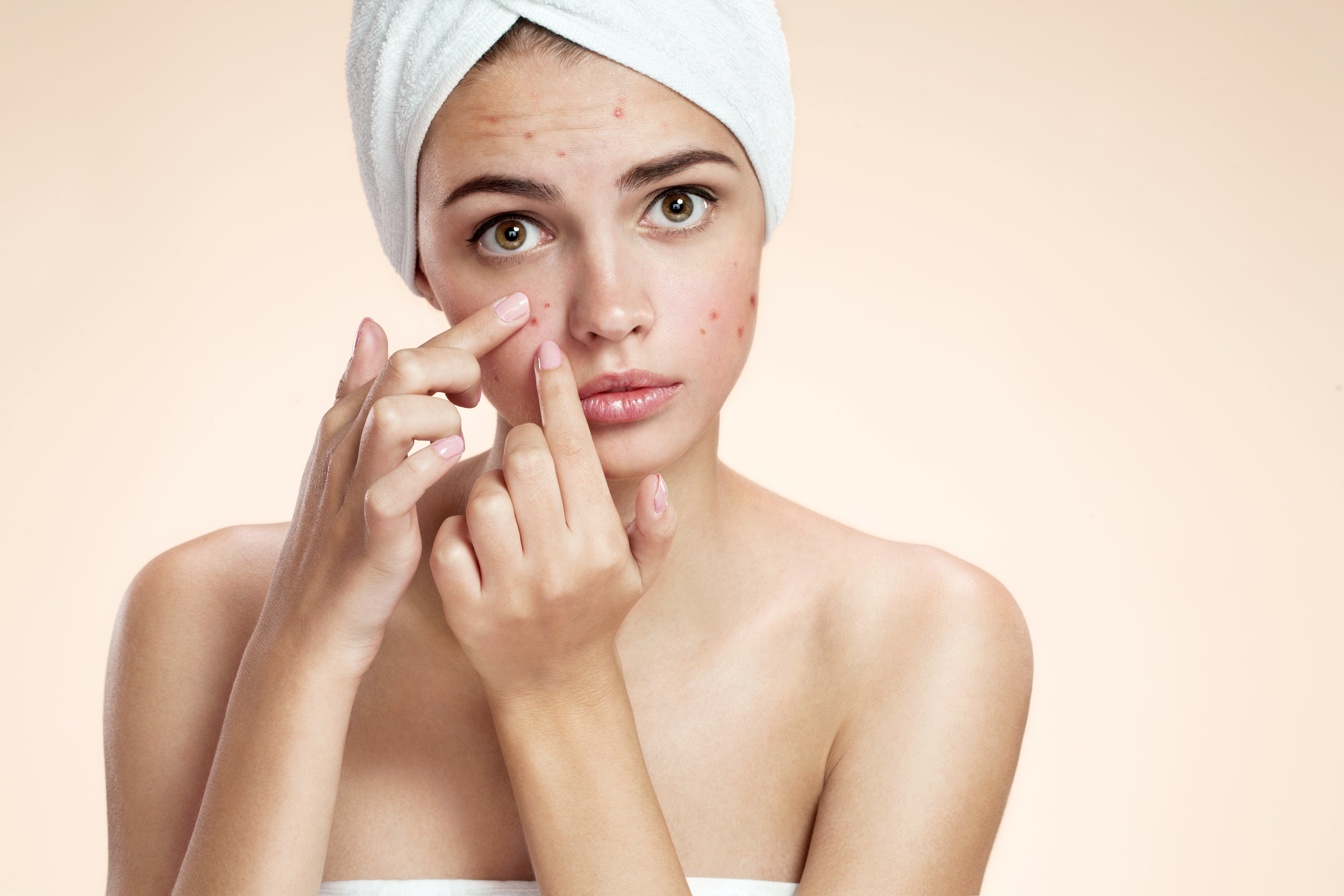What is Gua Sha and Why Everyone is Obsessed?!

Have you ever heard of Gua Sha? This traditional Chinese healing technique has been used for centuries to promote health and well-being. The way Gua Sha is used in beauty today is a little different to its traditional roots in Chinese medicine and we mainly see it used on the face but that’s not how the practice originated.
The Gua Sha was the first product I sourced for the Cygnet Accessories collection because the experience of using a Gua Sha speaks to all the things I love about my skincare routine – beyond making my skin look great. You can’t be hurried when using a Gua Sha, you need to be present and mindful in the slow and gentle strokes you take, you can visualise flushing the toxins from your body as you stimulate blood flow to your skin. As you gently massage away the tension in your jaw and forehead, you release the problems of the day, even for a short while. That is what self-care is about, being present, mindful, and taking time to reset. The feeling you get when you can give yourself this time each day is kind of addictive!
If you’re not on the Gua Sha train yet, read on as we explore what Gua Sha is, its history, the move into Western beauty, and the benefits it can offer.
What is the history of Gua Sha?
Gua Sha has its roots in Traditional Chinese Medicine (TCM), dating back over 2,000 years. The word "Gua" means to scrape, and "Sha" refers to the redness that appears on the skin during a traditional Gua Sha treatment. This centuries-old practice was performed mainly on the body to relieve muscle tension, reduce inflammation, treat various ailments including cold and flu, and enhance overall well-being. The technique involves using a smooth-edged tool, such as a jade stone or a spoon, to scrape the skin gently. This scraping action helps to stimulate blood flow and remove stagnant energy, known as Qi (pronounced ‘chee’), from the body. There is not really a Western term for Qi, but think of it as your life force, your energy. The key to health and wellbeing is to have balanced Qi, however, if you have a Qi deficiency or this is off-balance, you will be vulnerable to poor health.
Why is Gua Sha done?
As mentioned above, Gua Sha is done for various reasons, centred around its numerous health benefits and restoring health and wellbeing. Here are some of the key reasons why people practice Gua Sha:
-
Pain relief
Gua Sha is effective in relieving pain, particularly in conditions such as chronic neck and back pain, migraines, and muscle soreness. The scraping action helps to release tension in the muscles and promote the flow of blood and nutrients to the affected areas.
-
Detoxification and Skin health
The scraping motion of the Gua Sha tool helps stimulate blood flow and promotes lymphatic drainage. By stimulating blood circulation, Gua Sha helps to remove toxins from the body. The scraping action used with a Gua Sha encourages the lymphatic system to flush out waste and toxins and can help reduce puffiness and swelling. Stimulation of the blood circulation and lymphatic system can promote a healthy complexion, reduce the appearance of wrinkles and fine lines, and leave you feeling refreshed and rejuvenated with a natural glow. This type of Gua Sha is what we more commonly see promoted in the beauty space and is a much gentler practice than traditional body Gua Sha, considering the delicate nature of the skin and structures of the face.
-
Stress reduction & muscle relaxation
Gua Sha has a calming effect on the nervous system, making it an excellent tool for stress reduction. The gentle repetitive scraping action helps to relax and calm the body and mind, promoting a sense of well-being and relaxation. Furthermore, the pressure applied during a Gua Sha massage can help relax tense muscles, and for the face, this can also assist with a reduction in the appearance of fine lines and wrinkles.
Facial Gua Sha
Facial Gua Sha offers a wide range of benefits for the skin and overall well-being. By stimulating the skin, this technique helps to increase blood circulation, which in turn promotes the delivery of oxygen and nutrients to the skin cells. This can result in a brighter complexion, reduced puffiness, and improved skin tone.
Additionally, Facial Gua Sha can help to relax the facial muscles, reducing tension and promoting a more youthful appearance. It can also aid in lymphatic drainage, helping to eliminate toxins and reduce the appearance of under-eye bags and dark circles.
How Do You 'Do' Facial Gua Sha?
When performing Facial Gua Sha, it is important to use gentle, upward strokes to avoid causing any damage to the skin. Never drag at the skin. The tool should be held at a 15-degree angle (almost flat) and moved in a slow and controlled manner. It is recommended to start from the centre of the face and move outwards, following a specific sequence to ensure optimal results (view this great demo video).
If you have an acne break out, broken skin, rash, sunburn, or any other type of skin sensitivity it is probably best to hold off on using a Gua Sha until that is resolved so you don’t irritate your skin or spread any bacteria from one part of your face to the other. On the other hand, if your skin is intact but you are generally prone to redness, the coolness of the Gua Sha stone may be perfect to soothe and calm your skin.
Step-by-Step Guide to Using a Gua Sha
- Start with a clean face: Before using a Gua Sha, make sure your face is clean and free of any makeup or skincare products. This will allow the tool to glide smoothly over your skin.
- Apply facial oil or serum: Apply a few drops of your favourite facial oil or serum to your face. This will help the Gua Sha tool glide more easily and prevent any pulling or tugging on the skin.
- Hold the Gua Sha tool correctly: Hold the tool with the curved side against your skin for larger areas of the face. You may like to use the indented side of the tool on the eye socket and jawline,
- Begin at the neck: Start at the base of your neck and gently scrape the tool upwards towards your jawline. Apply light pressure and use long, sweeping motions.
- Move to the jawline: Continue scraping along your jawline, moving from the centre of your chin towards your ears. Repeat this motion several times on each side.
- Sculpt the cheeks: Use upward strokes to sculpt your cheeks, starting from the corners of your mouth and moving towards your ears. This can help lift and tone the muscles in your cheeks.
- Smooth the forehead: Finish by gently scraping the tool across your forehead, starting from the center and moving towards your temples. This can help relax tension and reduce the appearance of forehead lines.
- Cleanse the tool: After each use, clean the Gua Sha tool with warm water and mild soap. Dry it thoroughly before storing it in a cool, dry place.
To sum up, Gua Sha is an ancient healing technique with a rich history founded in TCM. It offers a wide range of benefits, including pain relief, detoxification, improved skin health, and stress reduction. For me, the practice itself is a way to slow down and be present during my skincare routine, taking time to quieten my mind and relax. I hope this story has been an interesting introduction to Gua Sha practice and might inspire you to give it a go if you’ve never done it before or remind you how good it is and you will park some time to incorporate it into your self-care routine. Whether you're looking to address specific health concerns or simply enhance your overall well-being, Gua Sha is a practice worth exploring.
Remember, you are the expert on your body. If you have any health concerns, consult a trained practitioner before trying Gua Sha to ensure a safe and effective experience.
References:
- Chen, Y., Lyga, J. (2014). Brain-Skin Connection: Stress, Inflammation and Skin Aging. Inflammation & Allergy Drug Targets, 13(3), 177-190.
- Nielsen, A., Moore, P., Allen, R., Jensen, M., & Tucker, P. (2008). The Effect of Gua Sha Treatment on the Microcirculation of Surface Tissue: A Pilot Study in Healthy Subjects. Explore: The Journal of Science and Healing, 4(4), 258-265.
- Chang, R., & Wu, J. (2019). Gua Sha therapy for chronic musculoskeletal pain: A systematic review and meta-analysis of randomized controlled trials. Complementary Therapies in Medicine, 43, 253-260.
- Nielsen, A., & Knoblauch, N. T. (2012). Gua sha: A Traditional Technique for Modern Practice. Elsevier Health Sciences.
- Braun, M., & Simonson, S. (2011). Introduction to Gua Sha. Elsevier Health Sciences.
- Arya, R., & Arya, V. (2015). Gua Sha: An Ancient Technique for Modern Practice. Journal of Traditional and Complementary Medicine, 5(1), 3-7.



